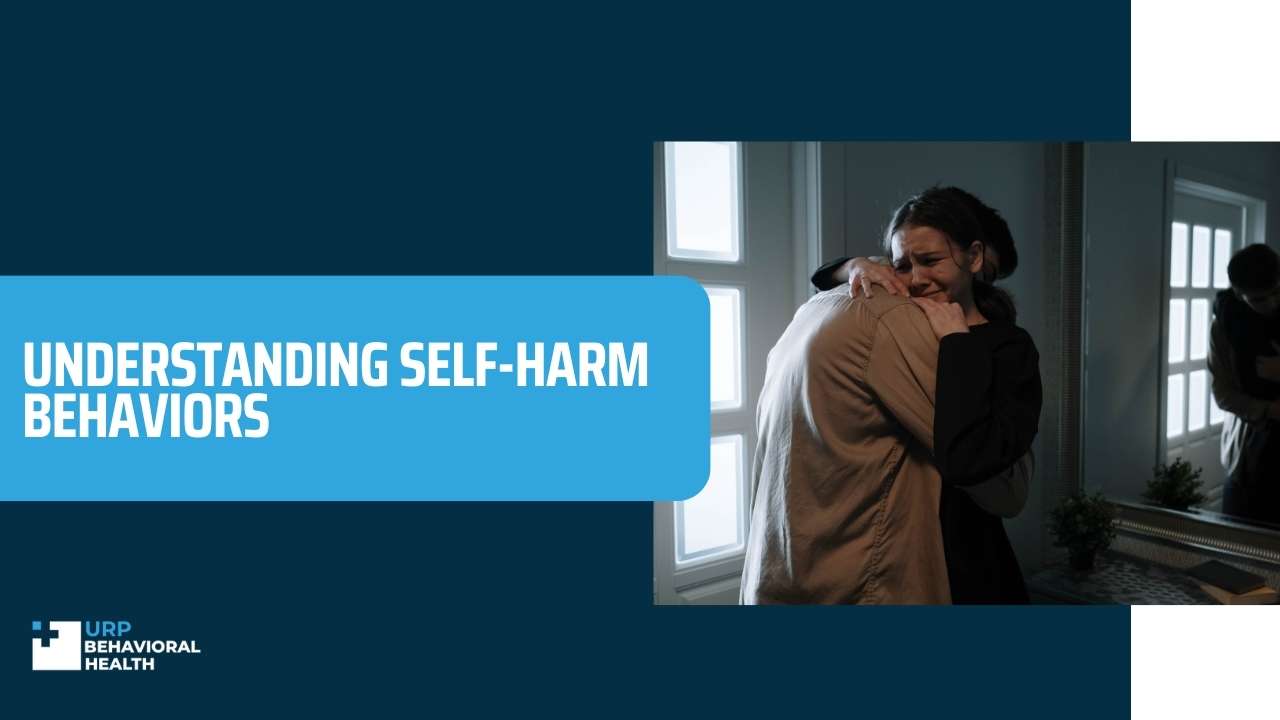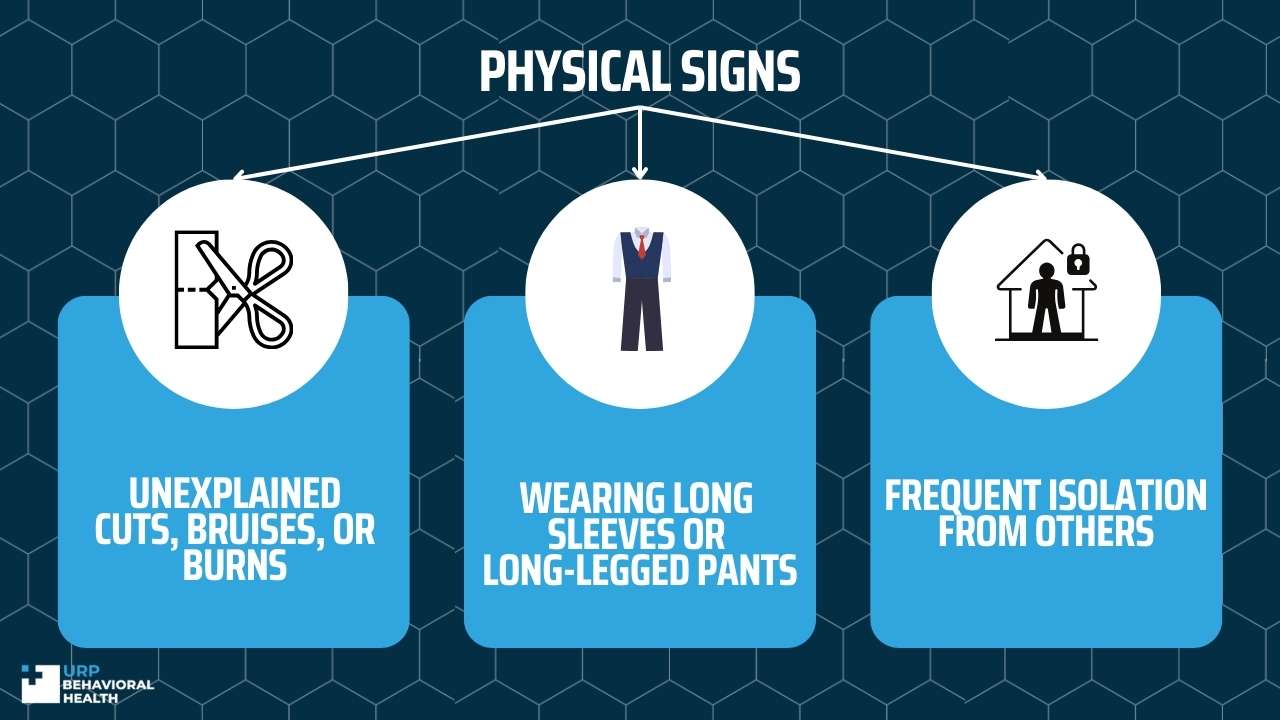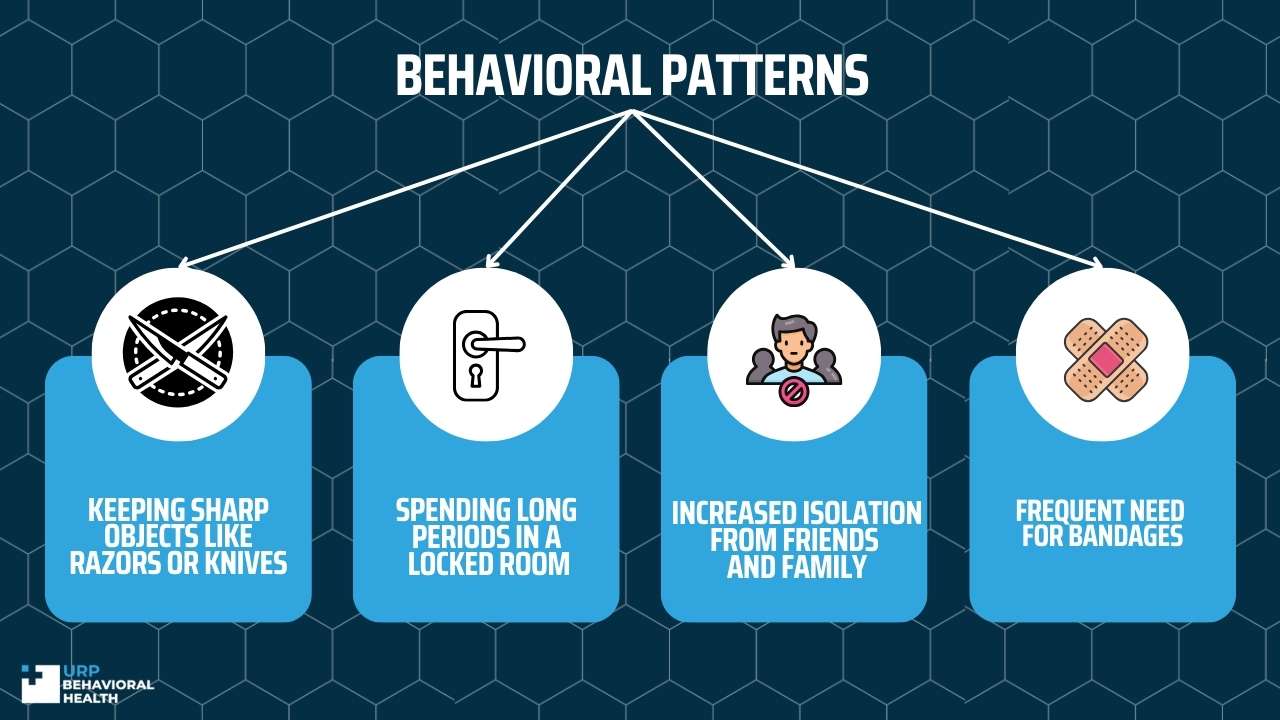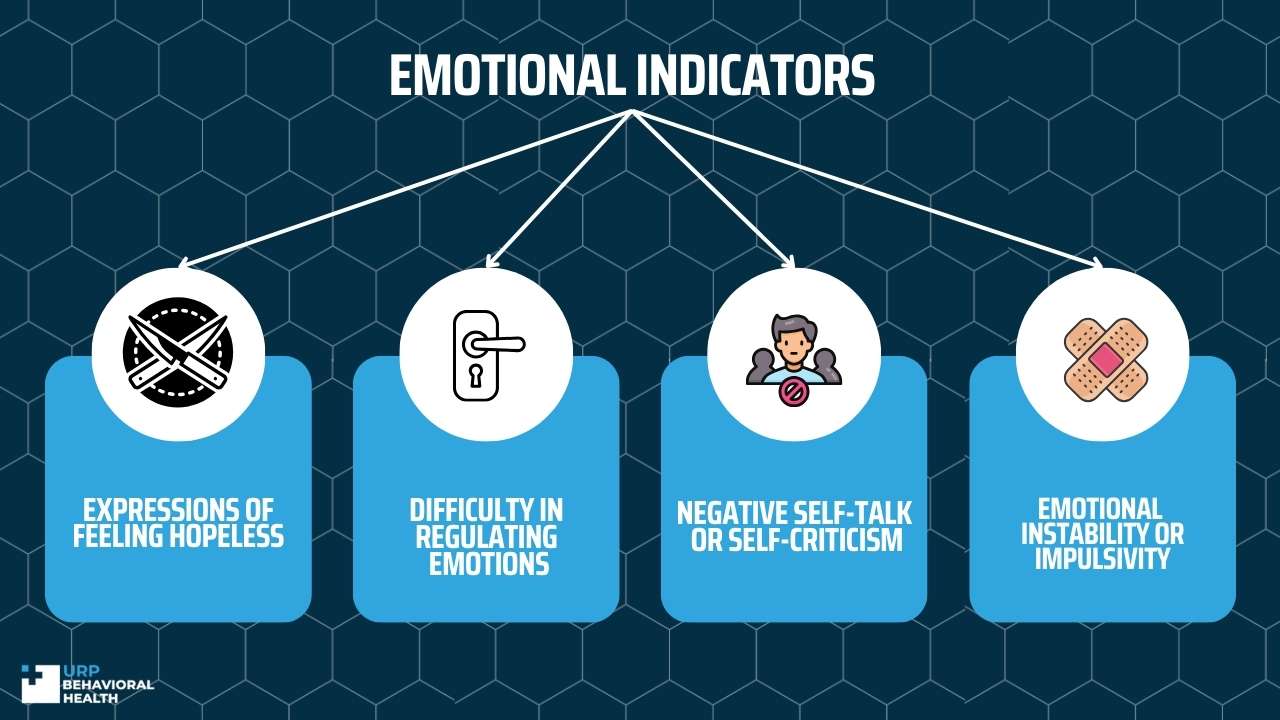Understanding Self-Harm Behaviors

Research indicates that the term ‘self-harm’ is a broad construct encompassing a range of behaviors meant to injure the body or cause pain. There’s a growing prevalence rate of non-suicidal self-injury, particularly among adolescents, with studies indicating that about 8 percent of young engaged in self-harm behaviors in their lifetime. For a better understanding of self-harm, here’s what you should know about its physical signs, behavioral patterns, and emotional indicators.


Physical Signs
Unexplained cuts, bruises, or burns
Because the most common form of self-harm is physical self-injury, signs such as unexplained cuts, bruises, or burns are more prominent. These are usually apparent in certain parts of the body, such as the wrists, arms, thighs, or chest.
Wearing Long Sleeves Or Long-Legged Pants
It’s quite common for people struggling with self-harm to hide their scars and bruises. Usually, this includes wearing long-sleeved shirts and/or long-legged trousers, depending on where they have self-harmed.
This habit may persist during warmer months as well when people generally feel more comfortable wearing short-sleeved shirts.
Frequent Isolation From Others
When you frequently engage in self-harm behavior, you may grow a habit of isolating yourself to hide injuries. Or, if your friends and family show concern about your well-being, you may prefer to isolate yourself to self-harm without being interrupted.
Keep in mind that NSSI is often associated with psychiatric conditions such as mood disorders. Consequently, you may feel the need to shut yourself away from others as a symptom of a disorder.

Behavioral Patterns
Keeping sharp objects like razors or knives
Because cutting is a common self-harm method, you may use sharp objects such as a razor blade or a knife. When you self-harm regularly, you may have these items close by, even when there’s no clear need for them.
Spending long periods in a locked room
For people who want to self-harm, bathrooms and bedrooms offer privacy to engage in the behavior without being interrupted. And because it can take some time for cuts and burns to stop bleeding, it’s common for people to spend considerably long periods of time when compared to what’s considered normal.
Increased isolation from friends and family
Research indicates a high correlation between self-harm behaviors and mental health conditions like bipolar disorder, depression, and borderline personality disorder. When you struggle with a condition like BPD, you may go through periods of self-imposed isolation as a way to cope with difficult feelings.
Frequent need for bandages
Persistent self-harm can prevent previous wounds from healing, which increases the risk of infections. It can also increase the frequency with which you change bandages. If you suspect that a loved one is engaging in self-harm behavior, you may notice a recurring need to bandage their arms, hands, or legs.

Emotional Indicators
Expressions of feeling hopeless
Studies indicate that feelings of hopelessness are an effective predictor of self-harm behavior. This could be because feelings of hopelessness and/or worthlessness are common symptoms in psychiatric conditions such as major depression, which carries a high risk of self-harm.
Difficulty in regulating emotions
There’s evidence that people who struggle with conditions such as PTSD and BPD have a tendency to self-harm. When you struggle with these conditions, you experience difficulty in regulating and controlling your emotions during stressful situations. In these times, self-harm is a way to express how you feel by converting your emotional distress into physical pain.
Negative self-talk or self-criticism
Research shows that having low self-esteem can be a risk factor for self-harm in adults and adolescents. This trait can manifest in the form of self-criticism and negative self-talk.
Emotional instability or impulsivity
According to the findings of one study, mood-based impulsivity is linked to a greater risk of initiating self-harm. Moreover, emotional instability is a common symptom of borderline personality disorder, which is commonly linked to self-harm.
Interpersonal Signs
Avoiding certain social situations
You may feel the need to avoid certain social gatherings, such as at a pool or at the beach, out of fear that others will see your scars or ask about them.
Difficulty forming and maintaining relationships
When you struggle with self-harm, you have a hard time regulating your emotions. This makes it difficult to form relationships with other people. Even when you do, sudden changes in mood or the inability to cope with overwhelming feelings make it harder to maintain relationships.
Over time, you may notice that you’re withdrawing from friends, family, and usual activities that you previously enjoyed. Nevertheless, early therapeutic interventions involving evidence-based treatments can help you start your journey to recovery.
A mental health expert can assist you in developing appropriate coping strategies. As you build effective coping skills, you’ll be less likely to engage in self-harm behaviors. If you’re concerned that a loved one is self-harming, look for these signs.
Let us guide you towards healing
We know that seeking treatment can be overwhelming, but our staff is here to make the process as smooth as possible. We’re available 24/7 to address any questions or concerns you may have.

